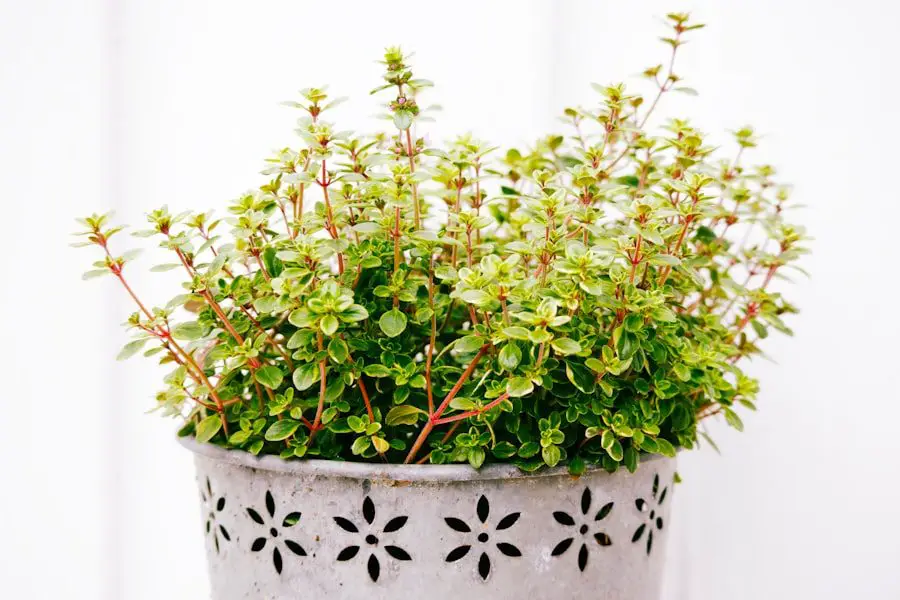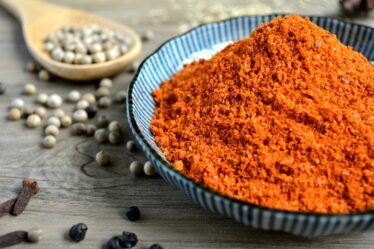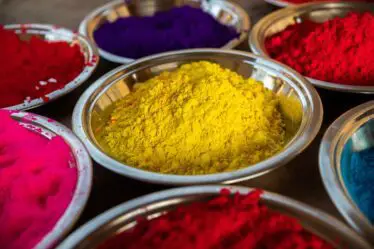
Food seasonings play a crucial role in enhancing the flavor of our meals. They have the power to transform a bland dish into a culinary masterpiece, tantalizing our taste buds and making every bite a memorable experience. Seasonings not only add depth and complexity to our food, but they also have cultural significance in different cuisines around the world.
Seasonings are not just about making food taste better; they also have a profound impact on our taste buds. Our taste buds are responsible for detecting the five basic tastes: sweet, sour, salty, bitter, and umami. Seasonings interact with these tastes, enhancing or balancing them to create a harmonious flavor profile.
In addition to their flavor-enhancing properties, seasonings also have cultural significance in different cuisines. Each culture has its own unique blend of herbs and spices that are used to create traditional dishes. These seasonings not only add flavor but also reflect the history, traditions, and values of a particular culture.
Key Takeaways
- Food seasonings play a crucial role in enhancing the taste and aroma of dishes.
- The science behind food seasonings lies in their ability to stimulate our taste buds and trigger different sensations.
- Common herbs and spices not only add flavor to dishes but also offer various health benefits.
- Exploring exotic spices can add unique global flavors to your meals and expand your culinary horizons.
- Blending spices allows you to create your own signature seasoning mixes and experiment with different flavor combinations.
The Science of Food Seasonings: How They Affect Our Taste Buds
To understand the impact of seasonings on our taste buds, it is important to understand the science behind flavor perception. Our taste buds are equipped with receptors that detect the five basic tastes: sweet, sour, salty, bitter, and umami. When we eat food, these receptors send signals to our brain, which then interprets the flavors.
Seasonings interact with these taste receptors, enhancing or balancing the flavors. For example, salt enhances the perception of sweetness and suppresses bitterness. Sour seasonings like lemon juice or vinegar can balance out sweetness and add brightness to a dish. Bitter seasonings like coffee or cocoa powder can add depth and complexity to savory dishes.
Aroma also plays a crucial role in flavor perception. When we eat food, volatile compounds are released into the air and travel through our nasal passages, where they interact with olfactory receptors. These receptors detect aromas and send signals to our brain, which then combines the taste and aroma to create the overall flavor experience.
Umami is another taste that is often associated with seasonings. Umami is a Japanese word that translates to “pleasant savory taste.” It is often described as a meaty or brothy flavor. Umami is detected by receptors that are sensitive to the amino acid glutamate, which is found in foods like tomatoes, mushrooms, and aged cheeses. Seasonings like soy sauce, fish sauce, and miso paste are rich in umami and can enhance the savory flavors in a dish.
Common Herbs and Spices: Their Health Benefits and Culinary Uses
Common herbs and spices not only add flavor to our dishes but also have numerous health benefits. Many herbs and spices are rich in antioxidants, which help protect our cells from damage caused by free radicals. They also have anti-inflammatory properties and can help boost our immune system.
Some common herbs and spices and their health benefits include:
– Turmeric: Turmeric contains a compound called curcumin, which has powerful anti-inflammatory properties. It has been used in traditional medicine for centuries to treat various ailments.
– Cinnamon: Cinnamon has been shown to help regulate blood sugar levels and improve insulin sensitivity. It also has antimicrobial properties and can help fight off infections.
– Garlic: Garlic has been used for centuries for its medicinal properties. It has antibacterial, antiviral, and antifungal properties, and can help lower cholesterol levels and blood pressure.
– Ginger: Ginger has long been used as a natural remedy for nausea and digestive issues. It also has anti-inflammatory properties and can help relieve pain.
– Rosemary: Rosemary is rich in antioxidants and has been shown to improve memory and concentration. It also has antimicrobial properties and can help fight off infections.
In addition to their health benefits, common herbs and spices also have a wide range of culinary uses. They can be used to add flavor to soups, stews, sauces, marinades, and rubs. They can also be used to season meats, vegetables, grains, and even desserts.
When using herbs and spices in cooking, it is important to store them properly to maintain their flavor and potency. Most herbs and spices should be stored in a cool, dark place away from heat and moisture. Ground spices tend to lose their flavor more quickly than whole spices, so it is best to buy them in small quantities and use them within a few months.
Exploring Exotic Spices: Adding Global Flavors to Your Meals
| Spice | Origin | Flavor Profile | Common Dishes |
|---|---|---|---|
| Cumin | Middle East | Earthy, Warm, Nutty | Chili, Curry, Tacos |
| Turmeric | India | Earthy, Slightly Bitter | Curry, Rice, Smoothies |
| Cardamom | India | Sweet, Spicy, Floral | Baked Goods, Chai Tea, Curry |
| Sumac | Middle East | Tangy, Citrusy | Salads, Meat, Vegetables |
| Star Anise | China | Sweet, Licorice-like | Braised Meat, Soups, Stews |
While common herbs and spices are readily available in most grocery stores, there is a whole world of exotic spices waiting to be discovered. Exploring exotic spices is a great way to add new flavors and aromas to your meals and expand your culinary horizons.
Different cuisines around the world use a wide variety of spices to create unique flavor profiles. Indian cuisine, for example, is known for its use of spices like cumin, coriander, turmeric, cardamom, and garam masala. These spices add warmth and complexity to dishes like curries and biryanis.
Middle Eastern cuisine often features spices like cinnamon, cumin, coriander, sumac, and za’atar. These spices add depth and richness to dishes like hummus, falafel, and kebabs.
Thai cuisine is known for its use of aromatic herbs and spices like lemongrass, galangal, kaffir lime leaves, Thai basil, and chili peppers. These ingredients create bold and vibrant flavors in dishes like green curry and tom yum soup.
When incorporating exotic spices into your cooking, it is important to start with small amounts and gradually increase the quantity to suit your taste. Some spices can be quite potent and may overpower the other flavors in a dish if used in excess. It is also a good idea to research traditional recipes from the cuisine you are exploring to get an idea of how the spices are traditionally used.
The Art of Blending Spices: Creating Your Own Signature Seasoning Mixes
Creating your own seasoning blends is a great way to add a personal touch to your cooking and create unique flavor profiles. By blending different spices and herbs, you can create your own signature seasoning mixes that can be used to enhance the flavor of a wide variety of dishes.
The benefits of creating your own seasoning blends are numerous. First, you have complete control over the flavors and can adjust the ratios of different spices to suit your taste. You can also experiment with different combinations of spices to create unique flavor profiles that are not found in store-bought blends.
When creating your own seasoning blends, it is important to balance the flavors. Start with a base of salt and pepper, then add other spices and herbs to create depth and complexity. It is also important to consider the flavors of the dish you are seasoning and choose spices that complement the other ingredients.
Experimenting with different spices and herbs can be a fun and creative process. Don’t be afraid to try new combinations and trust your taste buds. Keep track of the blends you create and take notes on what works and what doesn’t. Over time, you will develop a sense of which flavors pair well together and be able to create delicious seasoning blends with ease.
Salt and Pepper: The Classic Seasoning Duo and Their Versatility in Cooking

Salt and pepper are the classic seasonings that can be found in almost every kitchen around the world. They are versatile ingredients that can enhance the flavor of almost any dish, from soups and stews to meats, vegetables, and even desserts.
Salt is a mineral that is essential for life. It is responsible for regulating fluid balance in our bodies and plays a crucial role in nerve and muscle function. In cooking, salt is used to enhance the natural flavors of ingredients and bring out their sweetness. It can also help balance out other flavors and suppress bitterness.
There are many different types of salt available, each with its own unique flavor profile. Table salt is the most common type of salt and is fine-grained and highly processed. Sea salt is made by evaporating seawater and retains some of the minerals found in the water, giving it a slightly different flavor. Kosher salt has larger crystals and is often used in koshering meat.
Pepper, on the other hand, comes from the berries of the Piper nigrum plant. It has a pungent and spicy flavor that can add depth and complexity to dishes. Black pepper is the most common type of pepper and is made from dried and ground peppercorns. White pepper is made from ripe peppercorns that have had their outer skin removed, giving it a milder flavor.
Salt and pepper can be used to enhance the flavor of almost any dish. They can be used to season meats, vegetables, soups, stews, sauces, marinades, and even desserts. When using salt and pepper, it is important to taste as you go and adjust the seasoning accordingly. Remember that it is easier to add more seasoning than to remove it, so start with a small amount and gradually increase if needed.
Using Seasonings to Enhance the Flavor of Vegetables, Meats, and Seafood
Seasonings can be used to bring out the natural flavors of vegetables, meats, and seafood, making them more delicious and enjoyable to eat. By choosing the right seasonings and using them in the right amounts, you can elevate your dishes to new heights.
When it comes to vegetables, seasonings can help enhance their natural sweetness and add depth and complexity to their flavors. For example, roasting vegetables with olive oil, salt, and pepper can bring out their natural sweetness and create a caramelized crust. Adding herbs like thyme, rosemary, or basil can add freshness and aroma.
When it comes to meats, seasonings can help tenderize the meat and add flavor. Marinades are a great way to infuse meat with flavor and can be made with a combination of herbs, spices, acids (like vinegar or citrus juice), and oils. Rubs are another popular way to season meat and can be made with a combination of dry spices and herbs.
Seafood can also benefit from the right seasonings. Lemon juice, garlic, and herbs like dill or parsley can enhance the natural flavors of fish and shellfish. Spicy seasonings like chili powder or paprika can add a kick to grilled shrimp or fish tacos.
When using seasonings with different types of proteins, it is important to consider the flavors of the protein and choose seasonings that complement them. For example, delicate fish like sole or tilapia may be overwhelmed by strong spices, while heartier meats like beef or lamb can handle bolder flavors.
Sweet and Savory Seasonings: Adding Flavor to Desserts and Snacks
While we often associate seasonings with savory dishes, they can also be used to add flavor to sweet dishes and snacks. By balancing sweet and savory flavors, you can create unique and delicious treats that will surprise and delight your taste buds.
When it comes to sweet dishes, seasonings like cinnamon, nutmeg, cardamom, vanilla, and ginger are commonly used to add warmth and depth of flavor. These spices can be used in baked goods like cakes, cookies, pies, and muffins. They can also be used in desserts like custards, puddings, and ice creams.
Savory seasonings can also be used to add a unique twist to sweet dishes. For example, adding a pinch of salt to caramel or chocolate can enhance their flavors and make them more complex. Spices like chili powder or cayenne pepper can add a subtle heat to chocolate desserts. Herbs like lavender or rosemary can add a floral or earthy note to sweet dishes.
When using seasonings in sweet dishes, it is important to balance the flavors and not overpower the other ingredients. Start with a small amount and taste as you go, adjusting the seasoning as needed. Remember that the flavors will develop and intensify as the dish sits, so it is best to start with less seasoning and add more if needed.
Cooking with Fresh Herbs: Growing Your Own Herb Garden and Using Them in Recipes
Using fresh herbs in cooking is a great way to add brightness, freshness, and aroma to your dishes. Fresh herbs have a more vibrant flavor than dried herbs and can elevate the taste of any dish.
Growing your own herb garden is a rewarding experience that allows you to have fresh herbs at your fingertips whenever you need them. Herbs like basil, parsley, cilantro, mint, rosemary, thyme, and sage are relatively easy to grow and can be grown in pots or in the ground.
To grow an herb garden, choose a sunny spot in your garden or balcony and prepare the soil by adding compost or organic matter. Plant the herbs according to their specific requirements (some herbs prefer well-drained soil, while others prefer moist soil) and water them regularly.
When using fresh herbs in recipes, it is important to know how to properly handle them to maximize their flavor. Fresh herbs should be washed and dried before using them. To remove the leaves from woody herbs like rosemary or thyme, hold the stem at the top and run your fingers down the stem to remove the leaves. For leafy herbs like basil or parsley, you can simply remove the leaves from the stem.
Fresh herbs can be used in a wide variety of dishes, from salads and soups to marinades and sauces. They can also be used as a garnish to add a pop of color and freshness to a dish. When using fresh herbs, it is best to add them towards the end of cooking to preserve their flavor and aroma.
Tips for Properly Storing and Using Seasonings to Maximize Their Flavor and Shelf Life
Properly storing and using seasonings is essential to maximize their flavor and shelf life. Here are some tips to help you get the most out of your seasonings:
– Store seasonings in a cool, dark place away from heat and moisture. Exposure to heat and moisture can cause spices to lose their flavor more quickly.
– Keep seasonings in airtight containers to prevent them from absorbing moisture and odors from the surrounding environment.
– Label your seasonings with the date of purchase or expiration date to keep track of their freshness.
– Use seasonings in the right amounts to maximize their flavor impact. Start with a small amount and taste as you go, adjusting the seasoning as needed.
– Experiment with different combinations of seasonings to create unique flavor profiles. Don’t be afraid to try new spices and herbs and trust your taste buds.
– When using dried herbs, crush them between your fingers or palms before adding them to a dish. This will help release their flavors and arom as. Additionally, consider toasting whole spices before grinding them to enhance their fragrance and taste. – Remember that a little goes a long way with strong spices like cayenne pepper or cumin, so start with a small amount and gradually add more if needed. – Don’t forget about the power of salt and pepper! These basic seasonings can greatly enhance the overall taste of a dish. – Lastly, don’t be afraid to experiment with different cooking techniques such as grilling, roasting, or sautéing to bring out the best flavors in your ingredients.
If you’re a food enthusiast looking to elevate your culinary creations, you’ll definitely want to check out this article on Flavorful Sips. They have a wide range of delicious recipes and guides, including an easy fruit cake recipe that will impress your guests during the holiday season. But that’s not all! They also have a perfect oxtail stew guide that will warm your soul on a chilly evening. And if you have a sweet tooth, don’t miss their article on Turkish Delight – a sweet odyssey that explores the history and flavors of this delightful treat. So why wait? Click here to explore these mouthwatering recipes and spice up your kitchen adventures!



